1. Celebrate the first day of #30DaysWild by choosing your favourite outdoors breakfast spot for a #BigWildBreakfast on 1 June and start your month with a bang.
Wild about getting close to nature
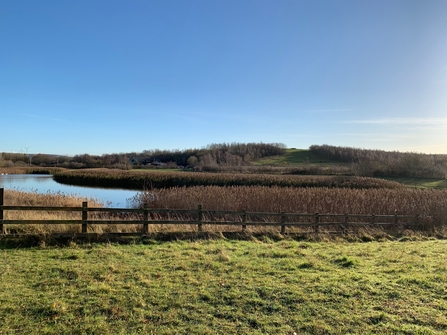
Pond 1 at Rainton Meadows
2. Visit Rainton Meadows Nature Reserve, at Houghton-le-Spring. The visitor centre is set within 74 hectares of woodland, wetland and grassland habitats, linked by accessible pathways and viewing areas. The centre has a children’s WildPlay area and the Meadows Coffee Shop. Stoat, weasel, brown hare, and roe deer are frequently seen and the wetlands attract numerous dragonflies and damselflies.
3. Low Barns Nature Reserve, at Bishop Auckland, is one of our region’s most important wildlife sites. This wetland reserve, bordered by the River Wear, also contains mixed woodlands and species rich grasslands. The site features a visitor centre and coffee shop. Look out for otters and kingfishers!
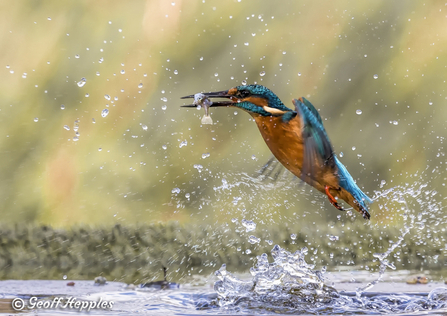
Kingfisher (c) Geoff Hepples
4. Did you know there are more than 250 types of bee in the UK?! Learn about them with our Wild@Home pack then count what’s buzzing about in your garden.
5. A wildlife pond is a great way to attract wildlife to the garden. Make June the month you build a mini or bucket pond.
6. Hannah’s Meadow is an upland hay meadow and a grazing pasture in Baldersdale, made famous by Hannah Hauxwell, who lived alone without electricity and running water. June is a great time to see traditional hay meadow flowers.
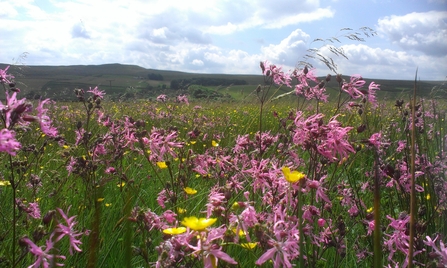
7. Help hedgehogs get around by making holes and access points in fences and barriers to link up the gardens in your neighbourhood. You can adopt your very own cuddly spiky friend from our online store.
8. Help Durham Wildlife Trust continue our vital work for the next 50 years by donating to our fundraising campaign.
9. Bishop Middleham Quarry Nature Reserve is one of the country's most important disused quarry habitats for wildlife. Visit in June to see the rare dark red helleborine orchids and you may also be lucky enough to see the rare Northern brown argus butterfly.
10. Set up a ‘nectar café’ by planting flowers for pollinating insects.
11. Join in a Durham Wildlife Trust event. We run regular events for all ages, either online or in person at our nature reserves.

Little terns (c) Mandy Bell
12. Head to the coast of Seaton Carew or Crimdon and you may be lucky enough to see some little terns – summer visitors after wintering in West Africa.
13. Volunteer for wildlife! The Trust offers a variety of volunteering opportunities. Find out more.
14. Go ‘urban birding’ at Shibdon Pond Nature Reserve, on Tyneside. Large numbers of wetland birds include lapwing, golden plover, redshank, snipe, teal as well as water rail, sandpiper and kingfisher. In summer, the site attracts martins, swifts and swallows.
15. Visit Hawthorn Dene, on the Durham coast, to listen for woodpeckers’ drumming and watch out for roe deer.
16. Grab your running shoes and sign up for one of the Durham Wildlife Trust charity fundraising places in the 2021 Great North Run.
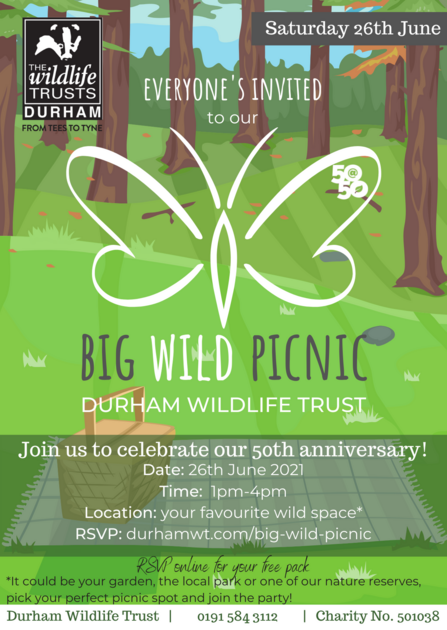
17. Sign up for the #BigWildPicnic. We’re asking everyone to pack a picnic hamper on June 26th and head to their favourite wild space. Register for your free picnic pack.
18. Hedleyhope Fell Nature Reserve is a mosaic of heather, bilberry, acid grassland, rush pasture, bracken beds, patches of gorse and scattered trees. Well served with car parks and footpaths, a great destination for a day out.
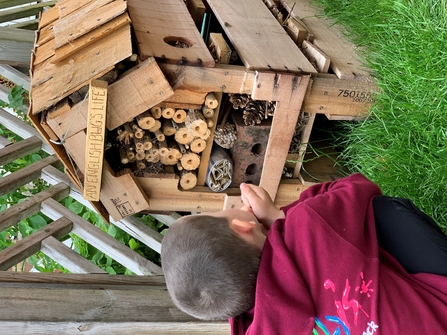
19. Build your own bug mansion and attract a multitude of creepy crawlies to your garden.
20. Help us bring ‘Ratty’ back to North East waterways. Our Naturally Native project is working to stop the decline of our native water voles.
21. Shop for wildlife! Our online and visitor centre stores stock a range of nature-themed gifts and goods.
22. Behold the wildflowers! Cross Lane Meadows Nature Reserve, at Gateshead, is a large area of re-seeded wildflower meadows. In summer, flowers like ox-eye daisy, yellow rattle, and common knapweed flourish. The meadows are alive with insects and butterflies.
23. Marvel in the magnesian limestone flora of Trimdon Grange Quarry Nature Reserve. Adjacent to the quarry is the Raisby Way disused railway line, which provides excellent habitat for birds and butterflies.
24. Learn all about Upland moorland, a very special landscape, and about the sixth most endangered bird in the UK, the Black Grouse, from our Living Uplands project.
25. Discover Brightwater by following the Ancient River Skerne as it starts near the Trimdons, via Hurworth Burn Reservoir, then flows south near Fishburn, Bishop Middleham, Sedgefield, Newton Aycliffe and through Darlington. Download a range of walking guides.
26. Setting up wildlife areas in your school makes for happier, healthier and more creative children. Or you can bring your class to visit us and enjoy a day of Adventure School.
Small Pearl Bordered Fritillary Butterfly (c) Pete Swan
27. Visit Black Plantation Nature Reserve, near Lanchester, for the chance to catch sight of the small pearl-bordered fritillary butterflies – among the rarest in the county.
28. A litter pick at any of our nature reserves, or in your nearby green spaces, can make a huge difference to wildlife. So grab a bag and stick and get tidying!
29. Barlow Burn Nature Reserve features mixed habitat with grassland, woodland and wetland and home to wildflowers, butterflies and breeding birds. The reserve is linked with accessible paths from Blaydon Burn via a cycle route and is a great destination for a wildlife walk.
30. The best thing you can do to support wildlife on your doorstep is to become a member of Durham Wildlife Trust. Join from as little as £2.50 per month and help secure a future for North-East wildlife.
To find out more, click the link below:
Help wildlife every day
Become a member of Durham Wildlife Trust
